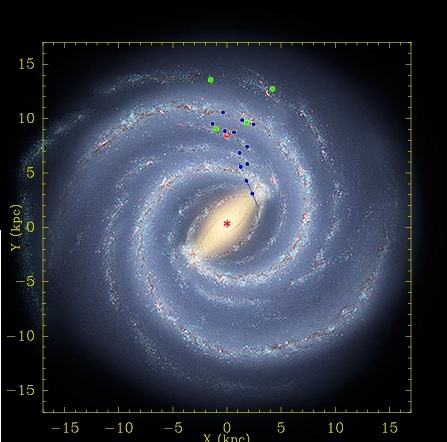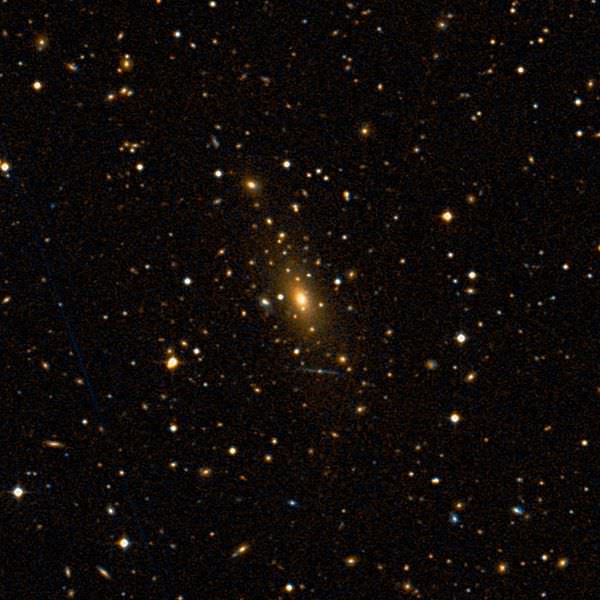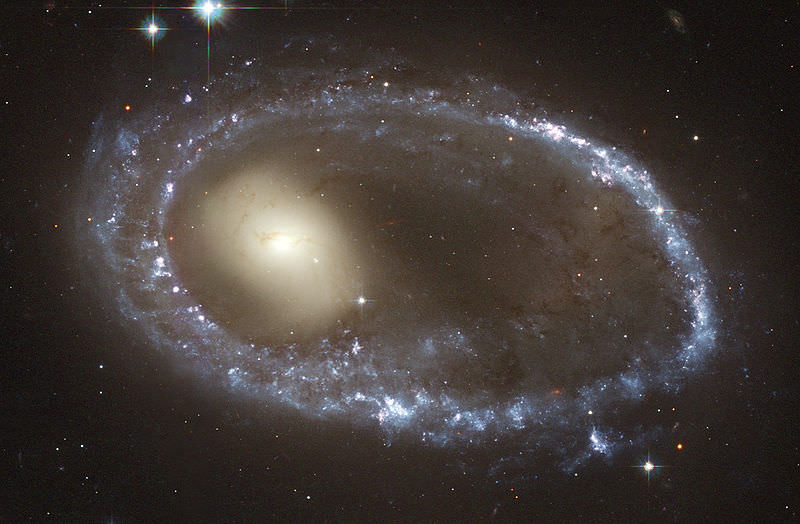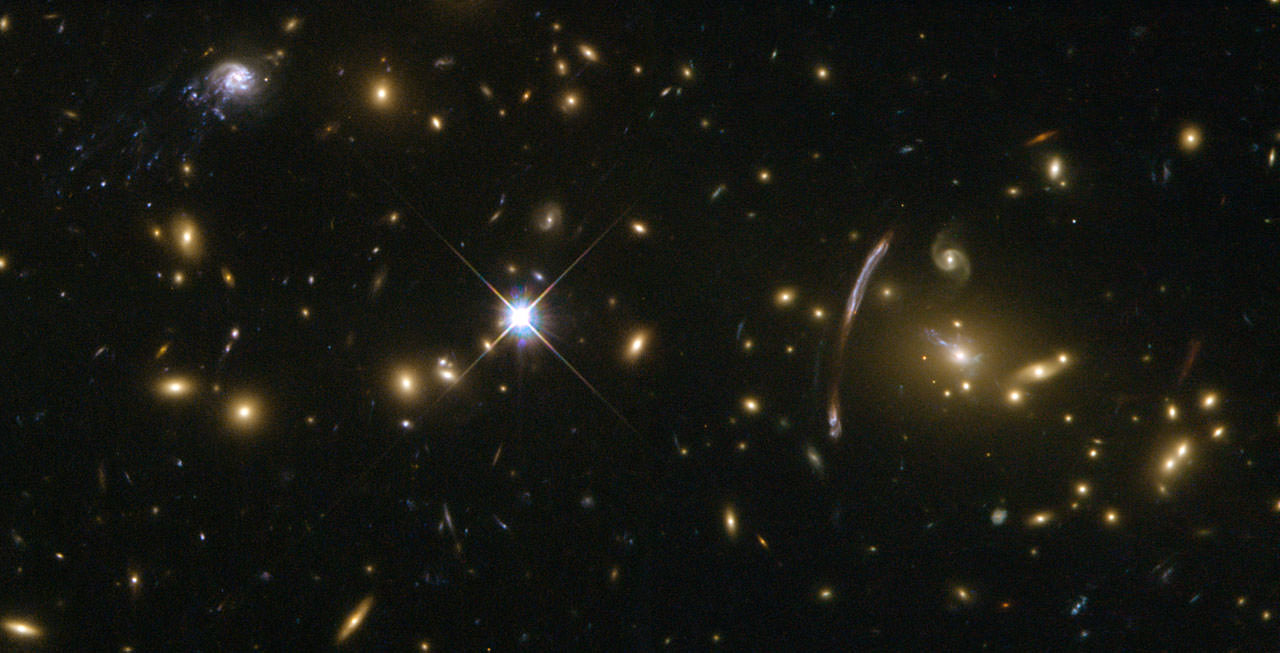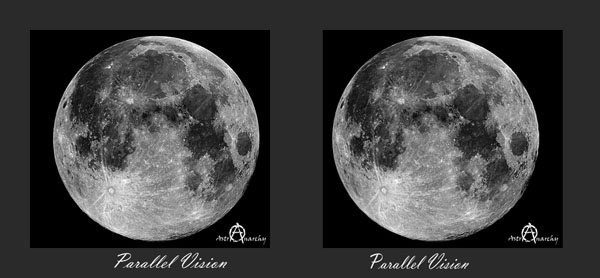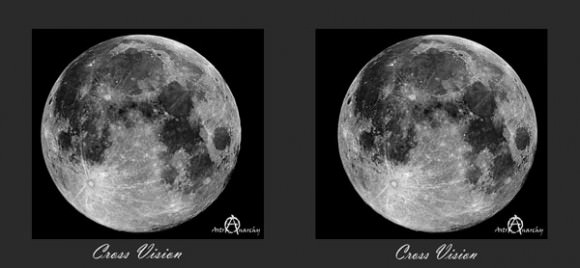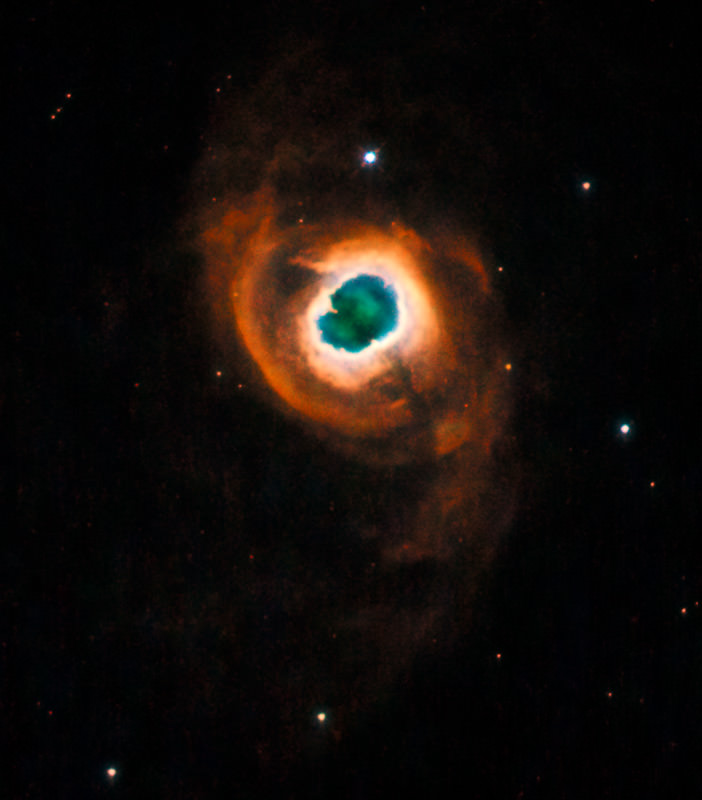[/caption]
The Milky Way is a vast spiral galaxy, shaped a bit like a spinning record; just one that measures 100,000 light-years across and only 1,000 light-years thick. Imagine you were below the Milky Way, and passed through the disk of stars above it. That moment when you’re halfway through the 1,000 light-year thickness of stars? That’s the galactic plane.
Astronomers actually use a coordinate system to measure positions in the Milky Way, starting with the Sun as the center point. No, we’re not actually at the center of the Milky Way, we’re actually off to the side, but this makes the measurement easier. They draw a line from the Sun to the center of the Milky Way, and that defines the 0-degree point, and then coordinates are measured within the galactic plane. You can have galactic latitude and longitude.
Have you heard anyone mention that the Sun is supposed to be crossing the galactic plane in 2012? Yeah, that’s a myth. Here’s the thing. The Sun does bob up and down in the galactic plane. Sometimes we’re above the plane, and then other times we’re below the plane. But that cycle takes 64 million years to complete! It’s impossible to define the exact moment of when the Solar System will pass exactly through the galactic plane.
And astronomers don’t think that anything special will happen when the Solar System does pass through the galactic plane. In fact, it’s the times when the Earth is above or below the galactic plane when we might be at risk. A recent scientific study correlated those times with large extinction events in the Earth’s history. It’s possible that the Milky Way’s magnetic field protects the Earth from intergalactic radiation and cosmic rays, and when we’re significantly above or below the galactic plane, life on Earth suffers more damage from space radiation.
But that’s just a theory.
So, to summarize, the Solar System won’t be passing through the galactic plane in 2012. There’s no easy way to know exactly when that’ll happen, and there’s absolutely no way to give that a specific date. And even when we do pass through the galactic plane, there’s no risk to our planet.
Here’s a link to an article on Universe Today about possible extinction events when the Earth is above or below the galactic plane.
If you’d like more info on galaxies, check out Hubblesite’s News Releases on Galaxies, and here’s NASA’s Science Page on Galaxies.
We have also recorded an episode of Astronomy Cast about galaxies – Episode 97: Galaxies.
Sources: EarthSky.org, NASA



